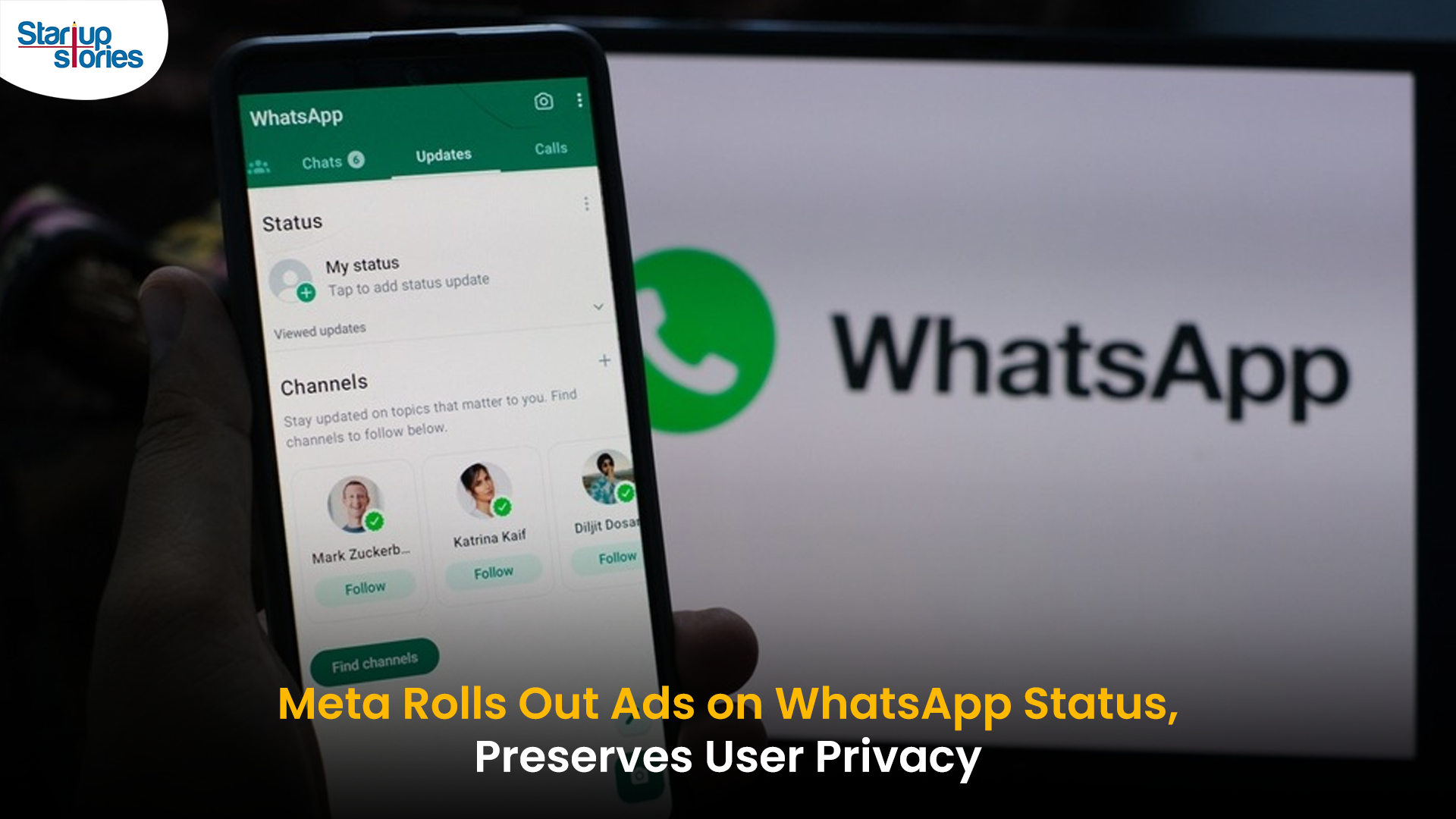Technology
Know How Technology Has Affected Cyber Security!

We have experienced a great renaissance in technology from the past decade. Everything has both sides, good and bad depending on how the users receive it or how they use it, right?
The same issue is with technology, as technology is increasing to peaks, the rate of crimes online or cyber crimes is also increasing parallelly. Many get addicted to the usage of technology these days and because of some flaws in technology, the number of cyber crimes is also increasing.
What is this Cyber Security?
Protecting computers, data, networks and other online programs from illegal access is called cyber security. Nowadays, it is really a daunting problem to protect from cyber attacks. Here are some factors how technology has affected cyber security:
1) Security Breache
The primary stage of cyber attacks for breaking any network is called a security breach. The risk may be very high or low depending on the intensity of the breach. Breach hacker can get access to the important data and can misuse it. In general, these sort of attacks is monitored by some software or firewalls.
2) Social Media Breach
Accessing of personal information from social media networks and using it for unfair means like posting something anti-social, is spam messaging.
3) Botnets
Botnets or simply called as zombie army are a group of computers used for transferring of the viruses on the internet without any personal action by the owner. By this hackers can steal personal data, online activity details etc.
4) Malware
Viruses, trojans, and worms used by hackers for a direct attack on a computer to steal data are called malware. It may enter a computer from an email attachment and spreads it forward. It is always recommended to check for an “HTTPS” connection in the address bar of the browser. Because S indicates secure.
5) Spamming
Sending of malicious messages in bulk, which are irrelevant to an individual through mail or other communication channels is called spamming. Many promoters choose this because there is no investment required for spamming.
6) Spear Phishing
The trail introduced from a trusted or known sender to a target individual for stealing confidential or personal information is called spear phishing. Spear Phishing is targeting a particular individual or an organization for stealing confidential data.
7) MIM Attacks
MIM meaning ‘man in the middle’ is a type of attack in which attackers record or store a conversation between two individuals manipulating them to think they are on a secure private connection. The person in conversation doesn’t even know that the attacker has the whole access of their conversation.
The solution to Cyber Crime
We don’t have total solutions to be protected from cyber attacks but can take some necessary measures to stay secure on the internet.
What Organizations should do?
They should use all available network and cyber security applications to stay secure and get rid of cyber attacks. They should also get Secure Sockets Layer on their web server and applications so that anyone who accesses would get a secure connection.
What Individual should do?
The person should visit only secured and trusted websites and should not respond to any spam emails requesting for personal data or banking details.
Conclusion: The internet is a huge ocean and no one is secure in it.
News
Google Launches Startup Hub in Hyderabad to Boost India’s Innovation Ecosystem

Google has launched the Google Startup Hub Hyderabad, a major step in strengthening India’s dynamic startup ecosystem. This new initiative aims to empower entrepreneurs, innovators, and developers by giving them access to Google’s global expertise, mentoring programs, and advanced cloud technology. The hub reflects Google’s mission to fuel India’s digital transformation and promote innovation through the Google for Startups program.
Located in the heart of one of India’s top tech cities, the Google Startup Hub in Hyderabad will host mentorship sessions, training workshops, and networking events designed for early-stage startups. Founders will receive Google Cloud credits, expert guidance in AI, product development, and business scaling, and opportunities to collaborate with Google’s global mentors and investors. This ecosystem aims to help Indian startups grow faster and compete globally.
With Hyderabad already home to tech giants like Google, Microsoft, and Amazon, the launch of the Google Startup Hub Hyderabad further cements the city’s position as a leading innovation and technology hub in India. Backed by a strong talent pool and robust infrastructure, this hub is set to become a growth engine for next-generation startups, driving innovation from India to global markets.
Technology
Jio Unveils Cloud PC Service to Bring Affordable Computing to Indian Households

- Jio Platforms has launched JioPC, a cloud-based virtual desktop service that transforms any television connected to a Jio Set Top Box into a fully functional computer.
- Users simply connect a keyboard and mouse to access a desktop-like environment, complete with web browsing, productivity tools, and educational apps—all without needing a physical PC or extra hardware.
- The service is device-agnostic and works with all consumer PC brands, making advanced computing accessible and affordable for millions across India.
JioPC is designed to support a wide range of activities, from professional work to online learning and creative projects. By leveraging Jio’s robust cloud infrastructure, users can run even compute-intensive AI applications directly from their TV screens. The platform also ensures data security and reliability, as all files and settings are safely stored in the cloud, protecting users from data loss even if their device is reset or replaced.
With JioPC, Jio aims to democratize digital access and bring high-performance computing to Indian households at a fraction of the traditional cost. The service supports popular productivity suites like LibreOffice and Microsoft Office online, and Jio is offering a free trial to encourage users to experience the benefits firsthand. This innovative move is set to reshape how people in India work, learn, and connect in the digital age.
Technology
WhatsApp Introduces Ads in Updates Tab, Keeps Chats Ad-Free

Meta has officially begun rolling out ads on WhatsApp, ending over a decade of an ad-free experience since its acquisition in 2014. The advertisements will appear only in the Updates tab, specifically within the Status feature, which lets users share photos, videos, and text updates that disappear after 24 hours—similar to Instagram Stories.
Where Ads Will Appear
- Ads will be visible exclusively in the Status section of the Updates tab, keeping personal and group chats ad-free.
- Businesses can use these ads to encourage users to interact via WhatsApp messaging.
- Meta is also introducing paid channel subscriptions and promoted channels within the Updates tab, allowing users to access premium content and discover new channels more easily.
Privacy and Targeting
Meta has emphasized that private messages, calls, and group chats will remain end-to-end encrypted and free from advertising. Ads will be personalized using limited, non-sensitive data such as location, language, followed channels, and ad interactions. Users can further manage ad preferences if they link WhatsApp to Meta’s Accounts Center.
User and Business Impact
The move marks a major shift for WhatsApp, which has long resisted advertising to preserve a clean messaging experience. While some users have criticized the change, Meta sees this as a significant opportunity to monetize WhatsApp’s 3 billion users and over 200 million businesses on the platform.
In summary, WhatsApp’s new ads will be confined to the Updates tab, ensuring personal messaging remains private and uninterrupted, while opening new monetization avenues for Meta and businesses.














casino en ligne
May 25, 2025 at 9:20 pm
Hi mates, its fantastic paragraph on the topic of teachingand fully explained, keep it up all the time.
vtnmlwjzx
July 22, 2025 at 7:47 pm
In today’s online casino world, most slots, both for free and for real-money, can be played on mobile. For players, all you need to do is load the game up whether you’re on mobile web or have downloaded an app, and the slot should scale to your mobile screen and be ready to go. This creates an unprecedented level of accessibility and convenience for players. That’s right, playing any of the casino and slot games here at Dream Jackpot offers the chance to win real money. When playing Buffalo King Megaways real money, consider using bankroll management strategies and reviewing buffalo slot machine tips to get the most out of your session. No person under the age of 18 years permitted to gamble. A slot’s biggest selling point aside from the jackpot, being one of the top slot games with the highest RTP and overall theme, are the bonus features. These are usually triggered when three or more “scatter” symbols appear on the reels. You then have the opportunity to win more money, either through a spins bonus, minigame, or selecting a hidden prize.
https://addictionfreebharat.com/jugnoo-teen-patti-players-are-now-flocking-to-slot-teen-patti-by-mplay/
рџ’Ў Editor’s insight: “This is more than just a Book of Dead clone and I was surprised to see just how much more I enjoyed this title over Rich Wilde’s adventure. The addition of Megaways really adds to the experience and having over 117,000+ potential win lines meant it wasn’t long before I bagged some winnings.” Lewis Crane, Content Editor Keep reading if you’d like to know more about the best Ethereum casinos highlighted on the list above. We offer detailed reviews on each of these top Ethereum online casinos so you can find the one that works best for you. The scene is set in the 1700s, when the civilised American East creeps into the Western wilderness. The slot game tells the story well with Morricone-like music and a sunrise-splashed desert sky as a backdrop. COPYRIGHT 2017 | VAPING ALL HOURS
MM88
November 5, 2025 at 1:56 pm
Với giao diện mượt mà và ưu đãi hấp dẫn, MM88 là lựa chọn lý tưởng cho các tín đồ giải trí trực tuyến.
MM88
November 6, 2025 at 5:18 pm
Khám phá thế giới giải trí trực tuyến đỉnh cao tại MM88, nơi mang đến những trải nghiệm cá cược thể thao và casino sống động.
谷歌蜘蛛池
November 9, 2025 at 3:26 am
利用强大的谷歌蜘蛛池技术,大幅提升网站收录效率与页面抓取频率。谷歌蜘蛛池
J88
November 10, 2025 at 1:22 am
Đến với J88, bạn sẽ được trải nghiệm dịch vụ cá cược chuyên nghiệp cùng hàng ngàn sự kiện khuyến mãi độc quyền.
站群程序
November 13, 2025 at 6:10 pm
搭载智能站群程序,自动化搭建与管理,为SEO项目提供核心驱动力。站群程序
GO88
November 15, 2025 at 6:04 am
Tham gia cộng đồng game thủ tại Go88 để trải nghiệm các trò chơi bài, poker phổ biến nhất hiện nay.
Kuwin
November 21, 2025 at 9:52 am
kuwin sở hữu kho game đa dạng từ slot đến trò chơi bài đổi thưởng, mang đến cho bạn những giây phút giải trí tuyệt vời.
iwin
November 22, 2025 at 8:45 am
iwin – nền tảng game bài đổi thưởng uy tín, nơi bạn có thể thử vận may và tận hưởng nhiều tựa game hấp